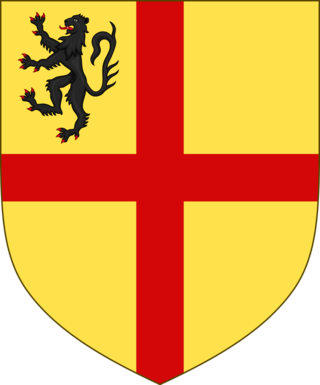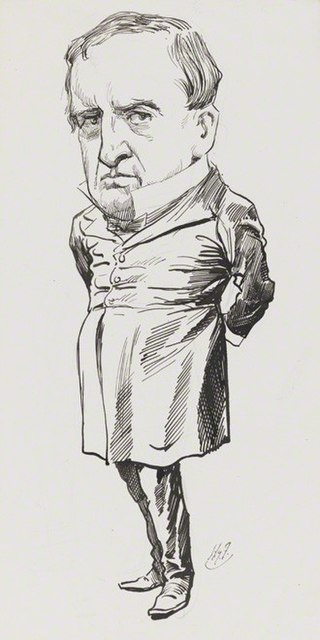Richard Óge Martyn was a Galway lawyer and member of the Catholic Confederates of Ireland. He was of the senior line of the Martyn family, one of the Tribes of Galway. He lived at Dunguaire Castle, Kinvarra. He worked with his brother-in-law and first cousin, Patrick D'Arcy, against the Plantation of Connaught in the 1630s, and served on the Supreme Council of the Confederate Catholics in the 1640s.
Ulick na gCeann Burke, 12th Clanricarde or Mac William Uachtar, 1st Earl of Clanricarde was an Irish noble and son of Richard Mór Burke, 9th Clanricarde by a daughter of Madden of Portumna.
Richard Burke, 4th Earl of Clanricarde was an Irish nobleman and politician.
Oliver Óge Martyn, Irish Jacobite and landowner, fl. ca. 1630-ca. 1709.
Patrick D'Arcy (1598–1668) was an Irish Catholic Confederate and lawyer who wrote the constitution of Confederate Ireland.
Murrough na dTuadh Ó Flaithbheartaigh, anglicised Sir Murrough O'Flaherty was Chief of Iar Connacht,.

John "na Seamer" Burke, Baron Leitrim, also known as John of the Shamrocks, was one of the notorious half-brothers called the meic an Iarla, whose conflicts with each other and their father, Richard Burke, 2nd Earl of Clanricarde, caused devastation to south Connacht several times between the late 1560s and early 1580s.

William Nicholas Keogh PC was an unpopular and controversial Irish politician and judge, whose name became a byword in Ireland for betraying one's political principles.
Events from the year 1580 in Ireland.
Sir Henry Lynch, 3rd Baronet was an Irish landowner, barrister and judge. He was one of the Roman Catholic judges appointed by James II & VII of England, Scotland and Ireland in his effort to transform the religious character of the Irish administration. As a judge, Lynch was described in unflattering terms both by his contemporaries and by later historians. Unlike some of his judicial colleagues, he was accused of gross bias against Protestants, which may be why he was one of the few Irish judges who fled abroad after the downfall of James's cause following the Battle of the Boyne. He died in exile in France.
Sir William Talbot, 3rd BaronetPC (Ire) was the last of the Talbot baronets of Carton: his title was forfeited on account of his loyalty to King James II of England. He was an Irish politician and judge, who served briefly as Master of the Rolls in Ireland.
Sir John Barnewall (c.1635-c.1705) was an Irish landowner, barrister and judge, who held several judicial offices, including that of Recorder of Dublin 1687-9.
Sir Theobald (Toby) Butler (1650–1721) was a leading barrister and politician in late seventeenth-century Ireland, who held office as Solicitor General for Ireland. He is mainly remembered for framing the civil articles of the Treaty of Limerick, and for his eloquent but unsuccessful plea to the Irish House of Commons against the passing of the Popery Act of 1703, which allowed any Protestant son of a Roman Catholic landowner to prevent his Catholic brothers from inheriting the family property. He was a much loved "character" in Dublin, and his great popularity shielded him from the penalties that he might otherwise have suffered as a result of his religious beliefs. Only his few enemies attacked him for his willingness to come to an accommodation with the new regime in order to preserve his own property.

Geoffrey Osbaldeston (1558-c.1635) was an English-born politician and judge who had a long but rather undistinguished career in Ireland.
Sir Jerome Alexander (c.1585–1670) was an English-born barrister, judge and politician, who spent much of his career in Ireland, and became a substantial Irish landowner. He was a noted benefactor of Trinity College Dublin. As a judge, he was so ruthless in securing guilty verdicts in criminal cases, and in imposing the death penalty on the guilty party, that for many years after his death "to be Alexandered" was an Irish synonym for being hanged.
Oliver Jones (c.1610-1682) was an Irish politician and judge of the seventeenth century, who was widely rumoured to have secret Roman Catholic sympathies, and was criticised for changing sides during the English Civil War.
Gerald Comerford (c.1558–1604), was an Irish barrister, judge and statesman of the late sixteenth and early seventeenth centuries. He sat in the House of Commons in the Irish Parliament of 1585–6, and briefly held office as Chief Justice of Munster and as a Baron of the Court of Exchequer. He profited from his close family association with the Earl of Ormond. Comerford rose rapidly in public service to become a trusted servant of the English Crown, and would probably have become one of the dominant political figures in the southeast of Ireland had it not been for his early death.
John Osborne (c.1630–1692) was an English barrister and law officer who spent much of his adult life in Ireland. He was the only surviving son of the celebrated writer Francis Osborne, and the subject of his father's most famous book, Advice to a Son (1656–1658).
Garrett Dillon (c.1640-c.1696) was an Irish judge, politician and soldier, who held the office of Recorder of Dublin. He is mainly remembered today as one of the signatories of the Treaty of Limerick, which he helped to negotiate. The refusal of the Irish Parliament to ratify the Treaty led to his downfall. He fled abroad and died in exile in France.
Sir Edward Crofton, 2nd Baronet was an Irish landowner and politician, who sat in the Irish House of Commons for more than thirty years, and served briefly as a member of the Privy Council of Ireland.



